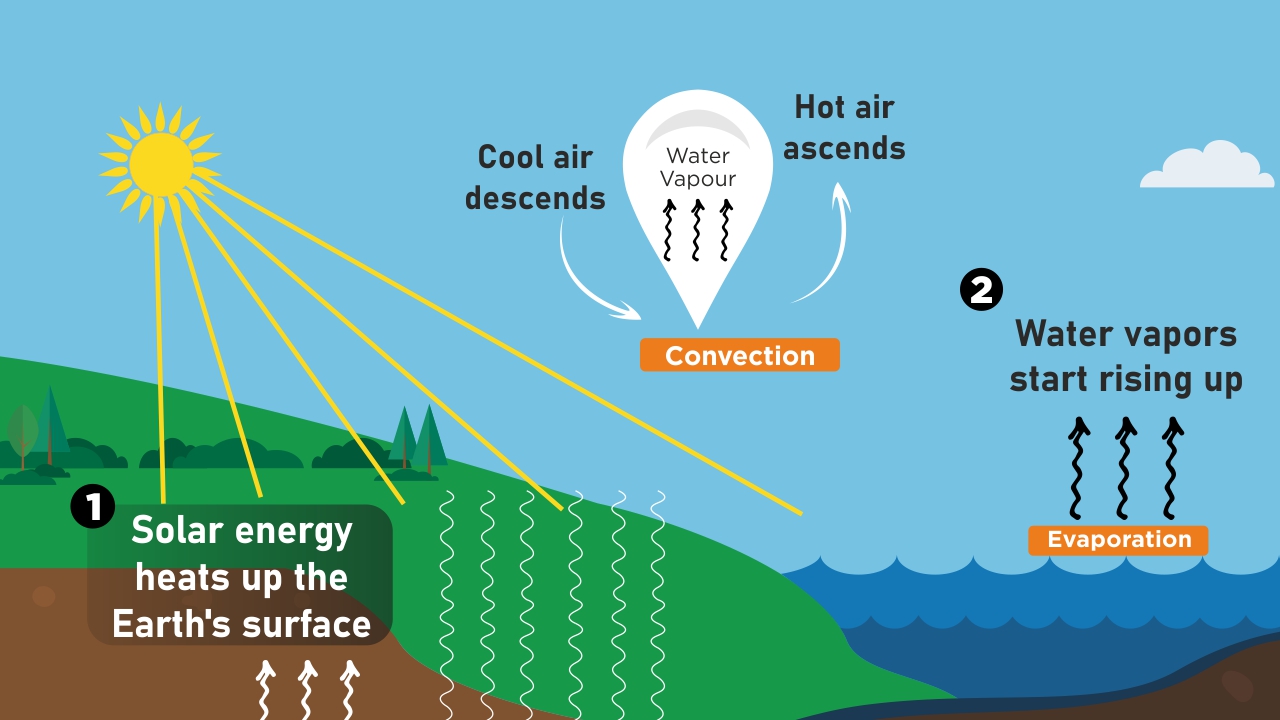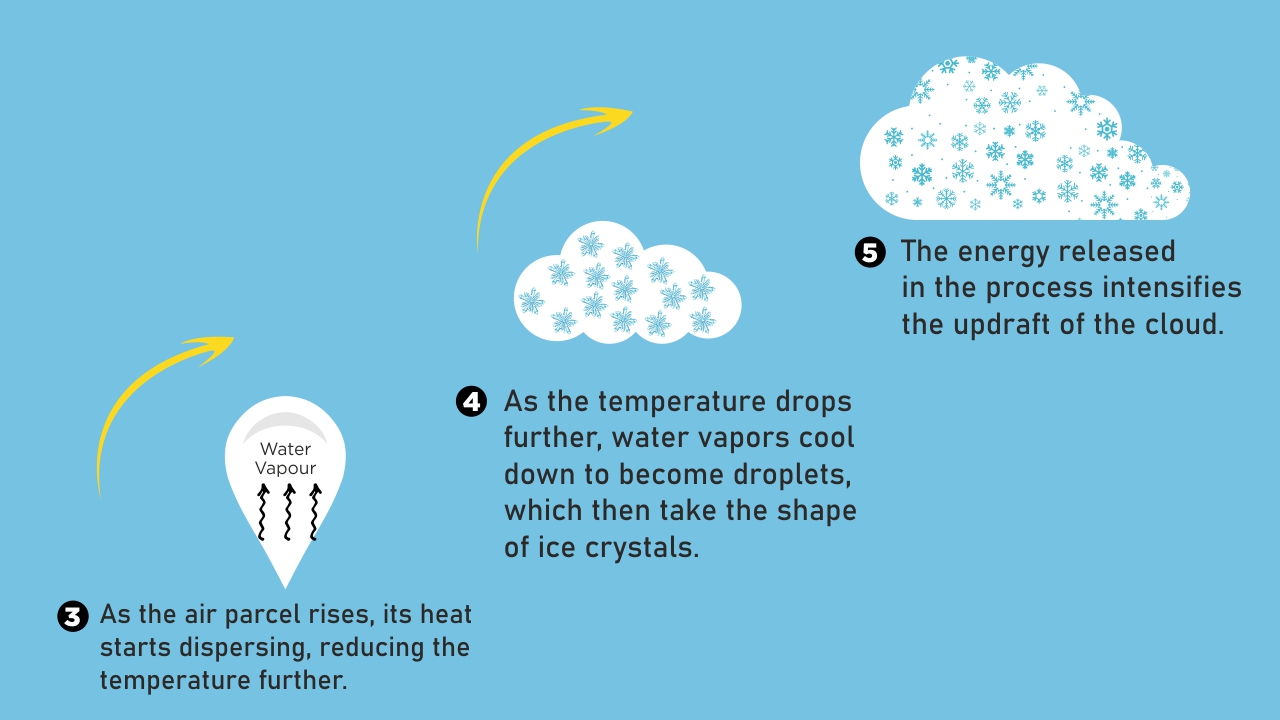Phenomena Explained How are Clouds Formed?
Science is an important part of our lives. If you look around yourself, you will be able to witness many scientific phenomena happening in your surroundings. This blog talks about one such common phenomena and tries to explain the science behind it.
Before diving deep into the same, we have a puzzle and its clues for you!
-
While walking outside or sitting under the sky, you can often witness a mass of water droplets, ice crystals, or a mixture of both, that is suspended above in the air.
-
These foamy structures float above us and usually appear white.
-
These are sometime higher or lower, bigger or smaller, thick or dense.
-
They have a multitude of waves forming different kinds of shapes.
Could you guess what is being talked about?
Let us simplify it for you!
We are talking about none other than the entities known as clouds and their properties. Formation of clouds takes place when vapors present in the air condense to form tiny droplets of water and further collect to form clouds.
As simple as this may sound, it is not so in real! So, tighten your belts because now we will be climbing a little high to know the process of the formation of clouds in detail.

We all know that 70% of Earth’s surface is covered in water. As the sun heats up the Earth’s surface, the solar energy evaporates water from water bodies like oceans, rivers, and lakes. Apart from that, the moisture present in soil or ground also starts to evaporate due to the heating effect created by the sun’s radiation.
The air in contact with the earth’s surface rises vertically because of heating. As a portion of the air heats up and rises, the air surrounding it cools and descends, creating a sort of invisible hot air balloon as shown in Fig. 1. This is accomplished by convection, the process whereby particles of the medium carrying thermal energy flow from warmer to colder regions.
The cargo of the invisible balloon formed doesn’t weigh it down. The more moisture it absorbs just before takeoff, the lighter it gets. Isn’t it interesting? *
You might know that as we go up, the atmospheric pressure goes down. This permits the unseen hot air balloon to continue to rise. Now, the internal heat of the balloon starts to disperse, which results in the lowering of its temperature.
Formation of clouds happens when water vapors are cooled by the air at the top and condenses into tiny droplets, giving rise to the process of condensation.
But have you ever wondered how it expands and goes up higher in the sky?
Here is a quick explanation to the same!

Due to the continuous process of condensation, the water vapors keep cooling and accumulating at the same height, making the cloud bigger and bigger. And as vapors convert into droplets, the energy that they received during evaporation starts releasing. Due to this, the surrounding air pocket heats up, lifting the cloud and drawing in more moisture from behind. That moisture again cools, condenses, and releases heat, further fueling lift and intensifying the updraft of the cloud as shown in Fig. 2.
This is how the formation of clouds takes place. There are various types of clouds present in the sky. The type of cloud formation depends heavily on the temperature and altitude of the troposphere. Not only this, but there are also many other interesting questions and facts related to the phenomenon of formation of clouds that will force you to think about the science behind it.
Keep thinking, keep searching and keep learning until you find the answers!

One thought on “Phenomena Explained How are Clouds Formed?”